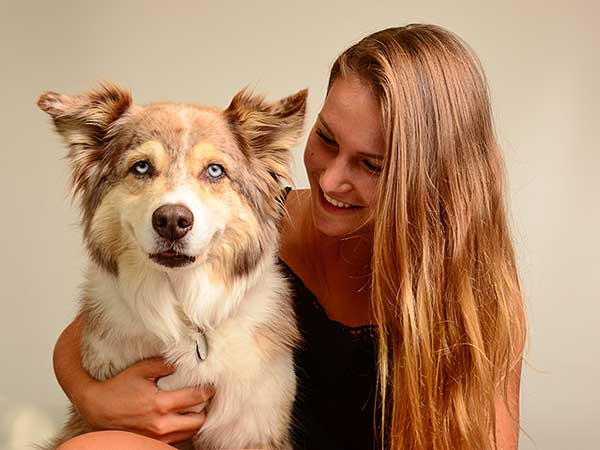
The Power of Positive Dog Training For Agility
Positive dog training is a much misunderstood concept. Many so called "dog experts" believe that taking a positive approach to training is akin to babying your dog and that as the human in the equation you need to maintain some type of control or dominance. In fact, this couldn't be further from the truth and that's why positive training techniques have picked up so much in popularity in recent years.
So what exactly does the positive approach entail? It's quite simple really; it's all about rewarding good behaviors and constructively discouraging bad behaviors. That means when your dog does something you want him to do, such as following a "sit" or "stay" command, you reward him with a treat or some attention. And if your dog engages in a negative behavior, you get that message across in a non-threatening way, such as ignoring him or taking away a toy.
This type of positive dog training is similar to the way many parents deal with toddlers, which is why it gets criticized for over simplifying matters, but in truth this approach has been proven to work most effectively. That's because at their core, what dogs want most is to please their owners. So if you show your dog that he's pleasing you, he will equate the rewarded behavior with that praise and be more willing to repeat it. Conversely, when a behavior results in the loss of that attention, he'll be less likely to repeat it and suffer those consequences.

Ingeborg Zeh / stock.adobe.com
Positive dog training methods help you maintain a strong bond with your dog as they do not foster fear and distrust.
Positive Dog Training Focuses On Rewards Rather Than Physical Punishments
While those are the basics of positive training, there are many specific ways you can go about instituting the reward method. The particular form that your rewards and punishments take may vary, involving treats, attention, praise, or toys. But the important thing is to keep each consistent so that the idea of good and bad behaviors becomes clear, and to refrain from engaging in more physical forms of punishment. Physical or aggressive punishments can actually backfire as they may increase bad behavior rather than correct it.
Balancing Positive Dog Training With Corrections
This does not mean it is never necessary to use physical corrections. There are situations like high distraction environments where your dog is not listening to you no matter how high value the food reward you are offering. What if their behavior is posing a danger to themselves or others? The point is to maintain balance. Whether you are using a verbal correction or a remote collar keep in mind that the goal is to change your dog's behavior to the behavior you want—not to punish them.
While there may be aspects of your dog's training that will require correction, always use the least forceful approach that works. In other words, if your dog corrects their behavior after a verbal correction there is no need to use a remote collar. On the other hand, if they are simply ignoring your verbal commands and mild physical corrections you will have to take it up a notch. You don't want to use more force than necessary, but you have to maintain control.
It's a balancing act. While positive approaches will get you most of the way, corrections should be used judiciously as they can negatively impact the bond you have with your dog. That's why it's vital to understand the difference between "correction" and "punishment" and the need to use the least amount of correction in order to affect the desired change in behavior.
Positive Training Methods Have A Wide Range Of Applications
The great thing about the concept of positive dog training is that it can be applied on every level, from basic obedience to specific skills like agility. The same techniques can work to teach your dog to follow vocal commands or in clicker training, where dogs learn to respond to the sound of a clicker. Both of these basic obedience skills can then be translated into the world of agility training, as they are the building blocks of a good agility program.
In agility training, dog and handler must learn to navigate a complex course using vocal commands or sometimes just clickers or hand signals. A dog that is rewarded for completing an obstacle will be more open to repeating the action and then you can link together the various actions into the completing of an entire course. The dogs that master this kind of obedience training, combined with physical skill, are the ones who have the most success with agility.
Positive dog training can make all the difference in building a strong bond with your dog, whether in obedience training or for agility. That bond is something all owners should strive for with their pet because once it is established it will last forever and you will both be able to reap the ultimate reward of love and trust.
Dog Trainer, Ed Frawley discusses balancing positive approaches with correction in this article on Leerburg.com.
Have Dog Training Questions?
Check out these introductory dog training videos...
I want my dog to stop being aggressive.
I want some help training my new puppy.
I want my dog to stop barking at everything.
Get Australian Shepherd Info, Website Updates, Special Offers, and Cartoons...
FREE GIFT
You'll also receive a free copy of the ebook
My Everyday Dog Training Tools
by professional dog trainer Daniel Abdelnoor, "Doggy Dan"












 Loading Image...
Loading Image...